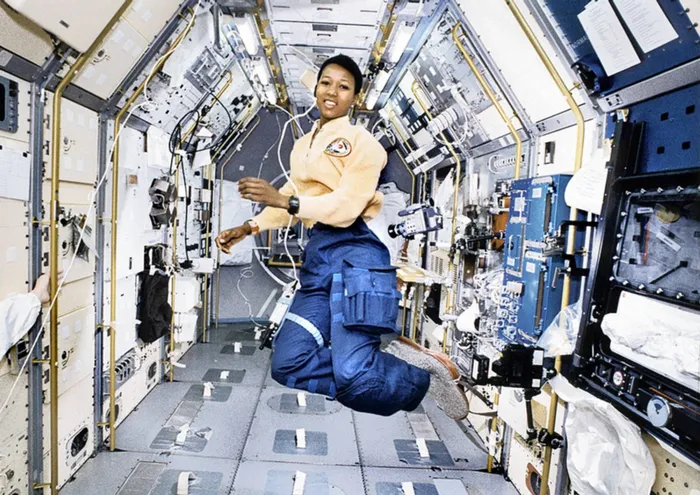Space reaches down to the village

Astronauts slept just under six hours a night before Shuttle missions, while astronauts on board the ISS slept on average six hours and five minutes a night. Picture: Nasa Astronauts slept just under six hours a night before Shuttle missions, while astronauts on board the ISS slept on average six hours and five minutes a night. Picture: Nasa
Johannesburg - It took just a moment for Dr Mae Jemison to walk into the history books.
The instant the shuttle Endeavor went into orbit on September 12, 1992 – and over the eight days that followed – Jemison became the first woman of colour in space.
It was a role that would come to define her, at least in everybody else’s eyes: the first black female astronaut.
But, sitting in a Pretoria hotel lobby the morning after flying in from the US, she leans back and muses over a life of chemical engineering, medicine, dance, business, the Peace Corps in West Africa, education, Star Trek appearances – and space travel.
“It’s one of those double-edged swords,” she says. “People know you because of that and there’s a fascination around it.
“But there are stereotypes to what people think astronauts are, and sometimes there’s a limitation people want to set on you. I think where I am now is the place I need to be. Maybe this is what everything has been leading up to.”
“This” is the 100 Year Starship (100YSS) project, and one of the reasons for Jemison’s visit in South Africa.
It’s the stuff of science fiction: sending people to the stars in the next 100 years.
It has the backing of Nasa and the US’s Defense Advanced Research Projects Agency.
Jemison is at the helm, drawing on her experience, from the effects of space on the human body to lecturing university students on sustainability.
With South Africa set to become home to the world’s largest radio astronomy project with the building of the Square Kilometre Array (SKA), Jemison is hoping to see how the country and 100YSS can collaborate.
Only it’s less about reaching the stars and more about the technology that will be developed along the way to make it possible – 100YSS is an idea to spur the same kind of explosive and radical innovation that accompanied the space race of the 1960s.
Every sphere of the human experience will have to be rethought: the big questions like “What will power the vessel?” and the small questions like “How will passengers wash their clothes?”
Food. Communications. On-board governance. Forget the “golly-gee-wow!” perception of science as difficult, foreign, niche. The discoveries around 100YSS will have real-life applications, just like the SKA.
“Science is the present and the future,” says Jemison.
“People pick up their phones with the GPS on it – but the damn stuff didn’t just happen. Somebody had to create it.”
She recalls a quote she learnt in university, taking African studies alongside her chemical engineering degree.
“Julius Nyerere, the first president of Tanzania, said: ‘While they were trying to reach the moon, we were trying to reach the village.’
“And that was one of those dichotomies I’ve always come across when people ask ‘Why do you want to do space?’
“But if you look at it, we’re reaching the village now because of space – with satellite communications and cellphone technology. And all because you were doing extraordinary things.
“And that’s the thing: pursuing an extraordinary tomorrow creates a better world today.” - The Star